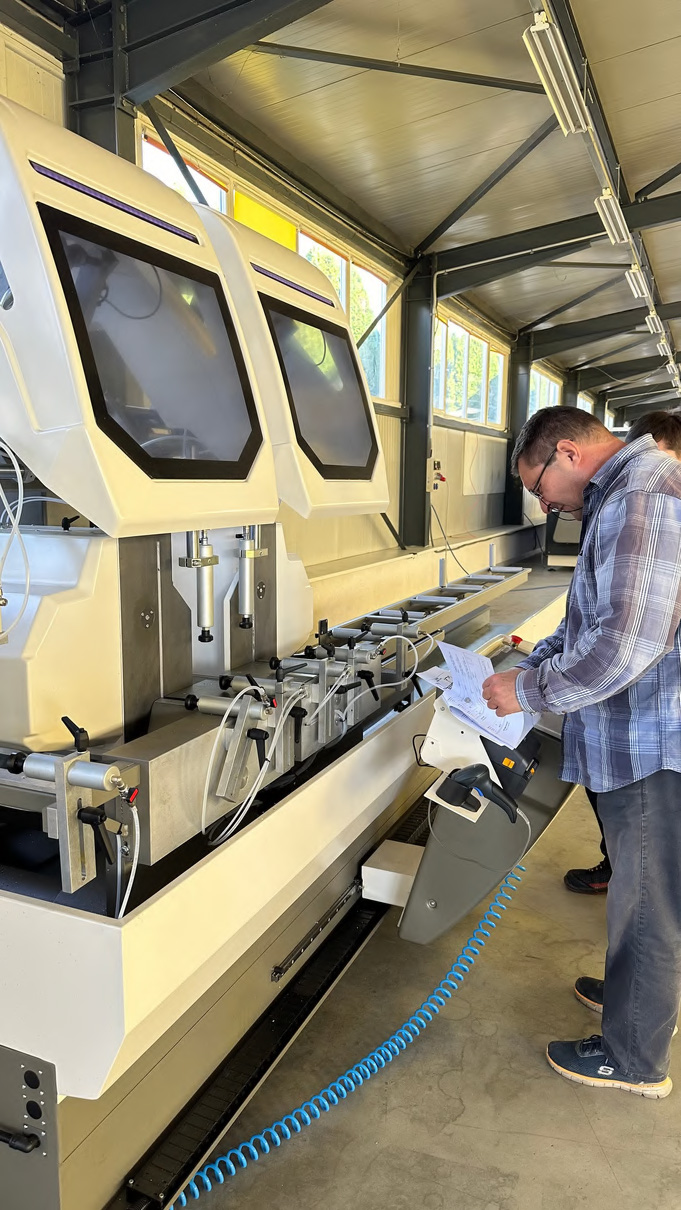How Are Aluminum Windows Made?
 Aluminum windows are crafted through a meticulous process that combines advanced technology, skilled craftsmanship, and high-quality materials. Here’s an overview of the manufacturing process:
Aluminum windows are crafted through a meticulous process that combines advanced technology, skilled craftsmanship, and high-quality materials. Here’s an overview of the manufacturing process:
1. Sourcing and Preparing the Aluminum
Aluminum is the primary material used for these windows. It is sourced as raw aluminum or recycled aluminum, which is both eco-friendly and energy-efficient. Once obtained, the aluminum is:
Melted and Refined: Raw aluminum is heated in furnaces to remove impurities.
Extruded into Profiles: The molten aluminum is pushed through dies to form specific shapes, such as window frames, sashes, and tracks.
The extruded profiles are then cooled and cut to the required lengths for window construction.
2. Surface Treatment and Finishing
The extruded aluminum profiles undergo surface treatments to enhance their durability and appearance. Common treatments include:
Anodizing: This electrochemical process increases corrosion resistance and allows for metallic finishes.
Powder Coating: A layer of powder is applied electrostatically and cured under heat, offering a variety of color and texture options.
Polishing or Brushing: For decorative finishes, the aluminum can be polished to a high shine or brushed for a matte texture.
These treatments not only protect the aluminum from weathering but also allow for aesthetic customization.
3. Cutting and Machining
The treated aluminum profiles are precision-cut and machined to fit the specific design and dimensions of the window. This includes:
Cutting frames to exact measurements.
Drilling holes for screws, fasteners, or drainage systems.
Adding grooves for sealing gaskets or thermal breaks.
4. Thermal Break Integration
In modern aluminum windows, thermal breaks are critical for insulation. This involves:
Adding a Non-Conductive Material: A layer of polyurethane or another insulating material is inserted between the inner and outer sections of the aluminum frame.
Bonding the Components: The two parts are joined securely, ensuring the frame resists heat transfer.
This step significantly enhances the energy efficiency of the windows.
5. Assembling the Frame
The aluminum profiles are then assembled into complete window frames. This includes:
Joining the pieces using screws, brackets, or welding.
Adding seals and gaskets to prevent air or water leakage.
Installing tracks or hinges, depending on the window style (e.g., sliding, casement).
6. Incorporating the Glass
Once the frame is ready, the glass is installed. The glass type (e.g., double-glazed, tempered, or tinted) is selected based on customer preferences. The process involves:
Fitting the Glass into the Frame: The glass is placed securely in grooves or clips designed for a snug fit.
Sealing: Weatherproof seals and adhesives are applied around the edges to ensure durability and prevent air or water ingress.
7. Quality Control and Testing
Before shipping, every aluminum window undergoes rigorous quality checks. This includes:
Structural Integrity Testing: Ensuring the frames can withstand pressure and usage.
Weather Resistance Testing: Checking for resistance to wind, rain, and temperature fluctuations.
Functional Testing: Verifying that moving parts, such as hinges and sliders, work smoothly.
8. Packaging and Delivery
Once approved, the windows are carefully packaged to protect them during transportation. They are then shipped to suppliers, retailers, or directly to customers for installation.
Conclusion
The manufacturing of aluminum windows is a detailed and precision-driven process. From sourcing raw materials to integrating modern technologies like thermal breaks, every step is designed to produce windows that are durable, efficient, and visually appealing. This meticulous process ensures that aluminum windows meet the diverse needs of both residential and commercial applications.
Мore about aluminum windows on the website https://elwido.com/